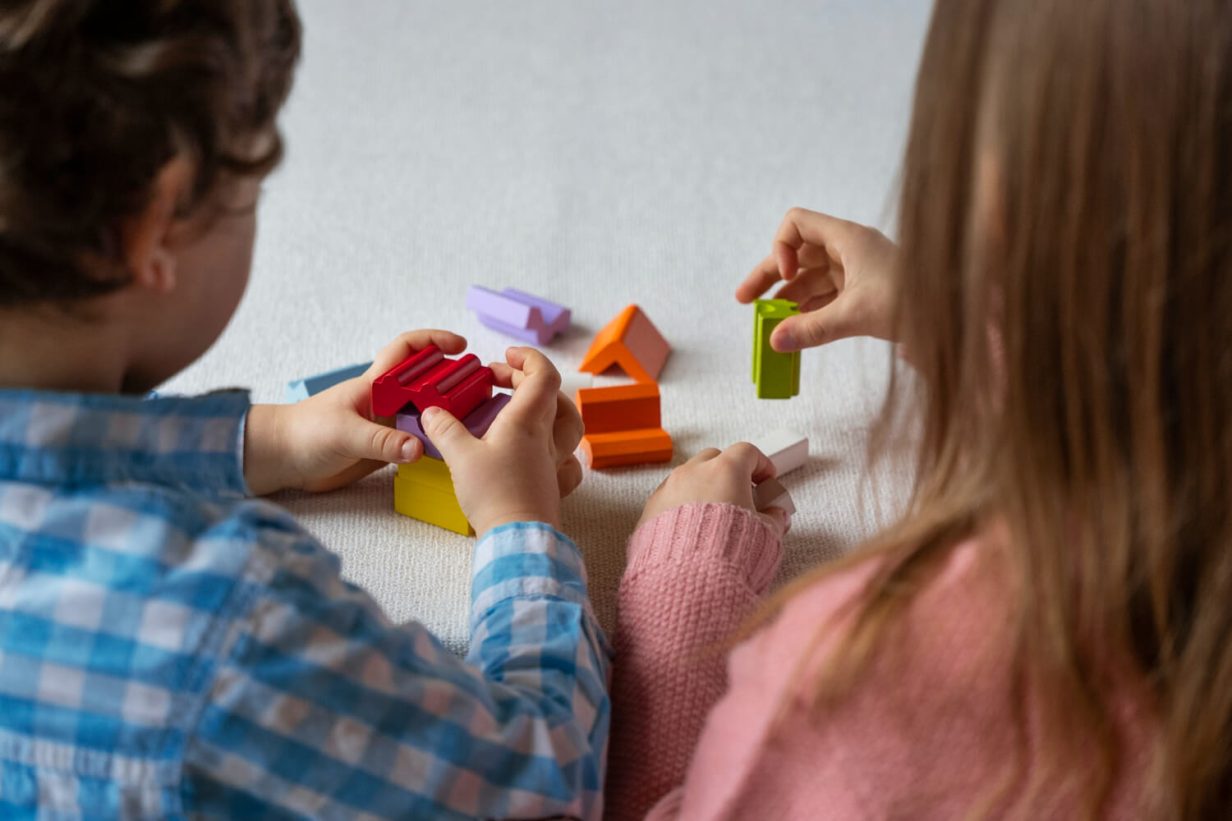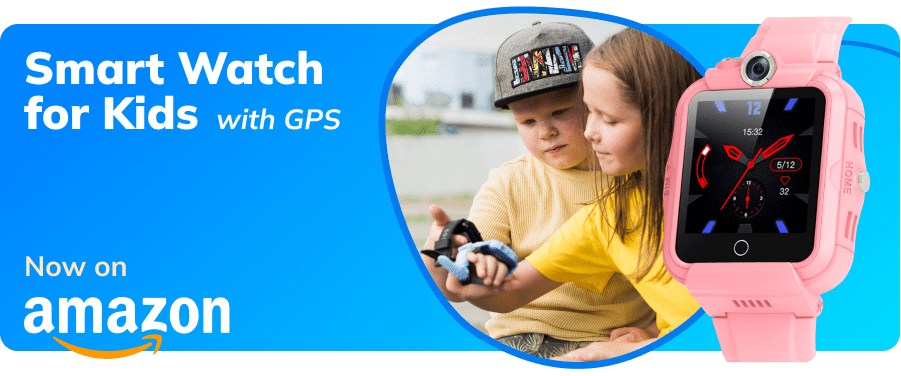Types of Play: How Kids Learn, Grow, and Explore Through Play

Play is essential for children’s development and happiness—but what are the different types of play, and how does each support their growth? Join us for a deep dive into how children learn through play and discover ideas to create a balanced play routine at home.
Contents:
- What “Play” Really Means and Why It’s So Important for Child Development
- The Stages of Play by Age
- The Major Types of Play and What Each Does
- Other Types of Play
- How to Create a Balanced Play Routine at Home
- Red Flags and When to Intervene
- FAQs
What “Play” Really Means and Why It’s So Important for Child Development
When we talk about “play,” we often think of fun and games—but it’s so much more than that. Play is how kids explore the world, learn new skills, and practice life lessons, all while having fun. The Merriam-Webster dictionary defines it as “to engage in sport or recreation” or “to take part in a game,” but for parents and experts, play is a cornerstone of healthy childhood development.
Research confirms that play is crucial for kids’ brains, bodies, and social skills. The American Academy of Pediatrics points out that play “contributes to the cognitive, physical, social, and emotional well‑being of children” and encourages parents to make time for child-led play every day.
Play builds:
- Cognitive skills — children learn to problem-solve, imagine, and experiment.
- Motor skills — running, climbing, stacking, or crafting all strengthen muscles and coordination.
- Social and emotional skills — kids learn to share, negotiate, and manage feelings through interaction.
- Resilience and independence — free play allows children to take small risks in a safe way, helping them bounce back from challenges.
a long-term review of play studies found that symbolic and imaginative play helps children process emotions, develop creative thinking, and build confidence. Outdoor play, in particular, strengthens both physical coordination and social skills, while giving children space to explore and connect with nature.
Even small moments matter. The Child Mind Institute notes that joining your child in play for just a few minutes each day can boost their confidence, strengthen your bond, and lower stress for both parent and child.
Play isn’t just fun—it’s how kids grow, learn, and thrive. Making time for it every day, whether indoors or outdoors, structured or free, gives children the foundation to succeed in life.
The Stages of Play by Age

freepik/Freepik
There are six main stages of play, all of which are important for a child’s development.
0–3 Months: Unoccupied Play
At this very early stage, babies are discovering how their bodies move and work by making plenty of movements with their legs, arms, hands, and feet. Tummy time is a great way to promote this play—it’s about giving babies a short amount of time when they’re awake, lying on their tummies. This helps your little one explore different ways to move their neck, head, and limbs.
Babies should always be wide awake during tummy time, as it’s dangerous to put babies down to sleep in this position.
0–2 Years: Solitary Play
At this stage, children start playing alone—although close adult supervision is always needed. Kids aren’t yet generally interested in playing with others (social play), but don’t worry. As well as being perfectly normal, independent play offers loads of benefits, including boosting creativity and self-exploration. This means it’s really important to encourage this type of play, both at this stage and as children get older.
2 Years: Onlooker/Spectator Behavior
At around the age of two, children usually begin to watch other kids playing, without joining in themselves. At this stage, your little one might not be ready to join the fun, but may ask questions about what’s going on or talk directly to the other kids who are playing.
2+ Years: Parallel Play
Parallel play is when a child plays alongside or near other kids but doesn’t actually play with them. This could be two kids sitting next to each other doing separate paintings, or playing separately at the same water table. At this stage, children are aware of each other but focused on their own activities and explorations.
3–4 Years: Associate Play
At around this age, kids start to interact with other children, but this interaction is limited. For example, kids might be playing in the same sandbox, but undertaking different activities—one could be digging while the other makes a sandcastle.
4+ Years: Cooperative Play
Children now become interested in playing with other kids and are interested in both the activity going on and the children engaging in it. Teaching kids about sharing, and how to behave when they lose (or win!) is important.
The Major Types of Play and What Each Does
Children engage in different types of play as they grow. Each type supports development in unique ways, from creativity to motor skills to social-emotional learning. Here are the core types you’ll see most often.
Symbolic Play
Your toddler might start exploring symbolic play at around 18 months old; it’s where one object is used to represent another. You may see, for example, your child using a building block in place of a cell phone, or a pen as a spoon. Kids may also start engaging in pretend play at around this age, such as making food in a play kitchen.
Developmentally, symbolic play nurtures creativity, supports emotional development, and builds language and social skills.
Encourage symbolic play by:
- Show your child how to use items symbolically, such as using a cardboard box as a truck or a spaceship.
- Ask your child to think about or find “ordinary” items to represent different types of animals. For example, a skipping rope placed on the floor could be a snake, while a few balls of cotton wool could represent a sheep.
Constructive Play
This type of play is where kids create something using materials in an organized way. Building a block tower and making sandcastles are a couple of examples.
Constructive play helps kids navigate the world, test out their ideas, and problem-solve. As well as creativity, persistence, and planning, constructive play builds logical skills and fuels children’s natural curiosity.
Encourage constructive play by:
- Give your child access to a range of materials, such as building blocks, sand, and craft supplies, and show them how each can be used to create something.
- Suggest expansion. Once your child has built a tower, a house, a forest, etc, ask what else they could add. What story could take place here?
Fantasy/Dramatic Play
Fantasy or dramatic play is where children flex their imaginative muscles and encompasses an endless range of fantastical or pretend activities. It could be playing “house,” pretending to be a wizard, running an imaginary restaurant, or becoming their favorite cartoon character or superhero.
This type of pretend play develops cognitive, social, emotional, and language skills, and can also reinforce learning.
Encourage constructive play by:
- Put together a dressing-up box for your child, full of clothing, accessories, and “props.”
- Suggest a pretend scenario based on a book you’re reading to your child, or a movie they’ve enjoyed. Provide some props for this, such as pretend crowns, wands, or stuffed toys for animals.
Physical Play
This type of play involves moving the body and includes activities such as dancing, riding a bike, playing a game of tag or rounders, or having a go on the play equipment at the park.
Physical play builds fine and gross motor skills, hand-eye coordination, balance, muscle development, and more.
There are plenty of both indoor and outdoor play ideas that involve physical play. Games such as Simon Says and hand-clapping activities can be enjoyed in even very small indoor spaces.
Encourage constructive play by:
- Provide opportunities for your child to enjoy physical play by creating a DIY obstacle course or setting up a ring toss-style game in the backyard.
- Encourage kids to try a wide range of physical activities, from children’s yoga to scooter riding to soccer to simple throw and catch.
Tip for parents: if your child has a smartphone or GPS watch, apps like Findmykids can help you keep track of their location during outdoor games, giving them freedom to explore while you stay connected and reassured.
Competitive Play
Competitive play involves organized activities that have rules and winners, such as sports or board games. This type of play encourages teamwork and helps kids get to grips with things like following rules, taking turns, and managing feelings associated with losing. Competitive play is a great way to develop social and communication skills, resilience, and mental dexterity.
Encourage constructive play by:
- Hold regular family board game evenings.
- Set up a scavenger hunt by giving kids a list of things to find around the house or garden, such as something blue, a pen, an item beginning with “B” — the winner is the child who returns first with all the items on the list.
Other Types of Play

EyeEm/Freepik
These types are less about a specific activity and more about how children choose to play. They complement the main types and are equally valuable for development.
Structured Play
Structured play—also called guided play—incorporates organized activities with a specific set of parameters and purpose. These activities are usually guided or supervised by an adult. Examples are two children playing a game of chess or a group of kids participating in an educational activity in the classroom. Structured play helps children learn how to follow instructions and rules, moderate their behavior, and build resilience and social skills.
When it comes to structured vs unstructured play, a balance of both is likely to be best. Some play includes elements of both structured and unstructured play, such as when you’re making up a new game with your child and ask them for help coming up with the rules.
Unstructured Play
Unstructured, or free, play is a really important type of play for kids. It can be tempting for parents to fill kids’ timetables with a range of structured activities, but free play offers a plethora of benefits, too. While adults will still need to supervise (and/or set some safety rules, depending on the child’s age and abilities), unstructured play is about allowing kids to direct their own playtime, and can be solo or social in nature.
Benefits of unstructured play include building a sense of independence and helping kids think outside the box. It can also encourage social play, giving children the opportunity to interact with others without adult intervention.
Sensory Play
When it comes to play-based learning, sensory play is vital—and fun! While all types of play will have a sensory element, sensory play is particularly rich in this regard. For babies and young toddlers, tactile play is usually fascinating. Allow your baby to feel (as long as it’s safe to do so) a variety of textures such as soft fabrics, the surface of water, and smooth pebbles.
Try creating a sensory tray for your young child. Simply choose a sturdy, shallow box, ideally with a lid for easy storage. Add to this box a range of materials, such as sand, shells, feathers, pebbles, beads, swatches of fabric, and dried pasta and rice. Allow your child to explore the contents, and give them, for example, some small containers and spoons to allow them to manipulate the materials.
Safety-wise, supervision is vital to prevent anything from going into little mouths—and it’s a good idea to put the sensory tray on an old towel or blanket for an easier clean up!
Related: Supporting Your Child’s Development: The Best Sensory Toys for Babies and Toddlers.
Creative Play
Any type of play that gets kids tapping into their creative side can be considered creative play. It encompasses activities such as singing, dancing, arts and crafts, role-playing, and storytelling. Other types of play can often be turned into creative play by allowing children freedom to add their own ideas to an activity. For example, if your child is using a simple kit to create a Christmas tree decoration, you could give them additional craft supplies to further personalize their creation.
Thinking outside the box is a key element of creative play. You can encourage this by maybe suggesting they make up their own outdoor game to play with friends, or giving them a large cardboard box and some junk modeling supplies, and seeing what they come up with. You may be amazed at your little one’s creativity!
How to Create a Balanced Play Routine at Home
Now we’ve looked at the developmental benefits of play and how it nurtures cognitive development in children, what’s the best way to create a balanced play routine at home? The tips below are a great jumping-off point.
- All kids are different, so when creating a play routine, it’s important to always take into account not only your child’s age but their ability level and preferences. As well as ensuring safety, this will also help prevent frustration.
- It’s a good idea to incorporate a mix of different types of play, including creative play and physical play—and be sure to mix up both structured and unstructured play, for the best experience possible.
- Include some rest time—it’s not just babies that require naps, toddlers may still need one or even two naps a day.
- Think, too, about your child’s moods at different times of the day. They’re likely to have more energy at certain times than others, so gear your play routine around this.
- Incorporate sensory and outdoor play into the routine, too. Take a look at our tips on creating a sensory tray above.
- Be prepared to go with the flow. On an outdoor walk, for example, your child may become fascinated with a leaf they’ve found, or be keen to try out some play equipment they’ve never had a go at before. Where possible (and it’s safe to do so), follow these interests and think about incorporating them into an activity.
- Similarly, be flexible. If one day things aren’t working out, be open to changing things up.
- Take into account your child’s interests. If they love animals, suggest they create a zoo with building blocks and toy figures.
- Revisit the play routine regularly as your child changes, develops, and discovers new interests.
- Celebrate victories—acknowledge and celebrate your child’s achievements. Whether they’ve created a junk modeling masterpiece or sat quietly with a book for ten minutes, praise builds confidence and self-esteem and promotes a love of lifelong learning.
Here are some examples of play routines you could try out.
Play Routine Example One
Morning
- Storytime — once you’ve read the story, suggest your child draw a picture of their favorite part of the tale.
- Music and movement — put on some music and have a dance party!
Midday
- Enjoy a nature walk — talk about the things your child notices and encourage them to collect natural items they find, such as pebbles, leaves, and twigs.
- Sensory free play — give your child their sensory tray and a few implements (such as small plastic containers and spoons) and allow them to follow their imagination.
Afternoon
- Play a board game — choose a game with rules your child can easily follow, and that’s unlikely to last too long.
- Independent reading — give your child some books (picture books for very young children) to look through quietly by themselves.
Play Routine Example Two
Morning
- Building block challenge — ask your child to build the tallest tower (or similar) out of blocks they can.
- Creative play — give your child access to a range of craft materials and let their creativity run free.
Midday
- Puzzle time — puzzles—from shape sorters for very young children to jigsaw puzzles for toddlers—are great for encouraging logical thinking and problem-solving skills.
- Obstacle course — set up a DIY obstacle course in your backyard or indoor space for your child to enjoy. Ask kids to come up with their own suggestions for additional obstacles.
Afternoon
- Water play — this can be in the tub, sink, or even with a small pan of water set on towels. Close supervision is vital—babies and young children should never be left alone around water, even for a moment.
- Read together — reading with your child is so important when it comes to childhood development. You can even look at simple picture books with babies and talk about the images.
Red Flags and When to Intervene

shurkin_son/Freepik
When it comes to play and play routines, it’s important to be aware of red flags and the times when, as a parent, you need to intervene. If you have any concerns about developmental milestones or are worried there’s an underlying medical issue causing your child to struggle with certain types of play or physical activity, it’s vital to consult a healthcare professional as soon as possible. Frequent aggression or particularly intense, regular tantrums can also be potential red flags, so seek advice if you’re struggling with these things, too.
Here are some of the developmental red flags to watch out for, by age:
0–12 Months
- Lack of eye contact
- Not reaching for toys by six months
- Failure to respond to loud noises
- Poor head control
- Doesn’t make sounds or babbles by twelve months
Read also: What Can a Healthy Child Do in a Year? Complete Guide to Child Development.
1–3 Years
- Doesn’t speak single words by sixteen months
- Doesn’t walk independently by eighteen months
- Does not follow simple directions
- Frequent, difficult-to-manage tantrums
- Lack of interest or social interaction with other children
3–5 Years
- Trouble understanding simple stories
- Difficulty speaking in complete sentences
- Significant difficulty with fine motor skills (such as buttoning clothes or holding a crayon)
- Aggressive or withdrawn behavior
- Lack of interest in playing with peers
6–12 Years
- Trouble with basic math concepts
- Difficulty reading or writing
- Significant problems with concentration or attention
- Frequent behavioral problems at school
- Trouble making or keeping friends
Of course, this list isn’t exhaustive. You know your child best, so if you have any concerns at all, speak with your healthcare professional.
Check out our Baby Milestones section, covering everything from birth through the teen years, for more detailed information.
How Different Types of Play are Vital for Childhood Development —and Fun!
Whether it’s dancing together in the living room, playing a board game, or gathering “treasures” on a nature walk, every day offers endless opportunities for your child to play, develop, and learn. As we’ve seen above, every different type of play offers its own benefits for your child, building new skills, developing existing ones, and nurturing a curiosity in the world around them. Use our guide above—including the example play routines—for inspiration, and get playing today!
FAQs
What are the five types of play?
The five types of play are symbolic play, constructive play, functional play, social play, and competitive play.
What are the 8 types of play?
The eight types of play are physical play, dramatic play, creative play, fantasy play, competitive play, social play, exploratory play, and constructive play.
What are the 6 stages of play?
The six types of age-related play are:
- Unoccupied Play (0–3 months). At this very early stage, babies are discovering how their bodies move and work by making plenty of movements with their legs, arms, hands, and feet.
- Solitary Play (0–2 years). At this stage, children start playing alone—although close adult supervision is always needed.
- Onlooker/Spectator Behavior (2 years). At around the age of two, children usually begin to watch other kids playing, without joining in themselves.
- Parallel Play (2+ years). Parallel play is when a child plays alongside or near other kids but doesn’t actually play with them.
- Associate Play (3–4 years). At around this age, kids start to interact with other children, but this interaction is limited.
- Cooperative Play (4+ years). Children now become interested in playing with other kids and are interested in both the activity going on and the children engaging in it.
What are the four major types of play?
The four major types of play are constructive play (objects or materials are manipulated to create something new), functional play (kids explore objects or their environment using their senses), structured play (involving a set objective, parameters, or rules), and unstructured play (children self-direct their own play).
Cover image: freepik/Freepik
Проверьте электронный ящик



















